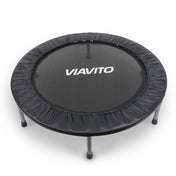Like an artist’s paintbrush, a pianist’s piano or a wizard’s wand… a tennis player’s racquet is their most important tool. However, many people make the wrong choice and suffer the consequences without even realising it. Every player is built differently and plays with a different style, so naturally, it’s not ‘one size fits all when it comes to choosing a racquet.
The tricky part is that there are so many options! So, I’m going to break down the basics of picking the perfect racquet to give you an idea of what you should look for in your first (or next) frame.
Although I have broken things down into three ‘player types’, you may fit somewhere in between, and that’s ok! The information that I give you should help you to get started with understanding racquet specs and how they can help or hinder your tennis!
Rackets for Beginners (or players with short swings)

When first getting started with tennis, there are some things that you should look for in a tennis racket for beginners to make playing easier. A bigger head size (>100sq in) will help you to make contact with the ball more often, whereas the bigger ‘sweet spot’ will also make your shots feel more comfortable. A bigger head size can be also helpful when it comes to power as the stringbed becomes more “springy”, reducing the need to swing big and fast, allowing you to maintain control of your shots.
Lighter racquets (250-280g) are a great choice for beginners as they are easier to wield around which makes them perfect for learning the ropes!
Players with less mobility or with shorter swings on their shots may also benefit from these bigger head sizes and lighter frames.
A very popular racquet for beginners is: Head TiS6.
Rackets for Intermediate Players (or spin players)

Once you feel more consistent with your shots and you start to generate some of your own power, a slightly smaller head size (around 100sq in) will be more suitable for you. Although your sweet spot size will decrease with the smaller head, you will feel more control within your shots, which is important now that you’re swinging faster with more confidence. The mid-range head size is also good for advanced players that like to hit with spin, as the stringbed is still big enough to allow for more string movement, helping you to impart more spin onto the ball.
The best tennis rackets for intermediate players are in the mid-weight range (280-300g). They give you more stability when you’re hitting the ball harder and receiving faster shots, but equally light enough for you to move around quickly (this is great for spin players too!)
Rackets for Competitive Players (or big hitters)

Now that you’re playing tennis competitively and you’re generating powerful shots, it is time to consider a tennis racket for advanced players. Rackets from this category are more control-oriented. This is where a smaller head size can help. Depending on your game style, consider a head size of between 95-100sq inches. The smallest heads are very unforgiving. If you hit slightly off-centre, you’ll really feel it! However, when you time the ball well, you get maximum control.
You should also consider a heavier racket (>300g) as these can give you that extra stability and ‘plough through’ for sending and receiving big shots. Heavier racquets are suited to players with longer swings as once you initiate your swing, the racquet weight picks up momentum and does a lot of the work for you, however not easy to wield around quickly.
Grip size

My final piece of advice for picking a racquet is super important and it’s to make sure that you choose the right grip size. This will help to prevent injuries and will also enable you to feel more comfortable. An old rule that still works today is that if you hold the grip normally but place your thumb pointing towards gather head, you should be able to fit your opposite index finger in the gap between the base of your thumb and your fingers. With this in mind, there is a little room for preference, but don’t stray too far from the rule as it could cause injury!
Happy hitting!
Ashley, The Tennis Mentor
─────────────────────────────────────────────────────────────────
Article by Ashley Neaves - The Tennis Mentor
www.thetennismentor.co.uk

